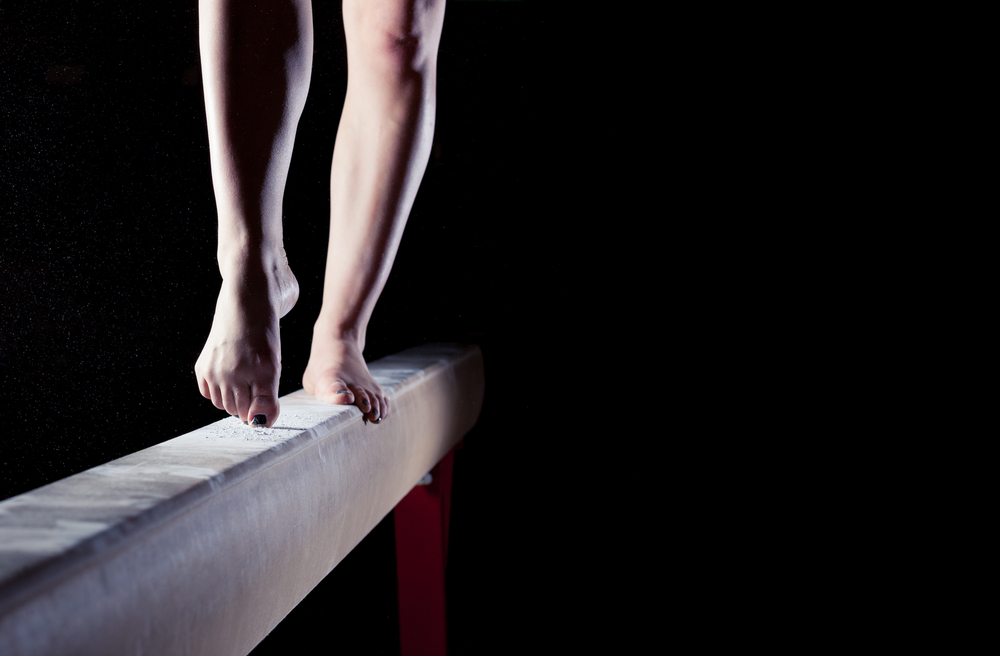On Balance
It seems so simple: Balance is what we do every day when we walk. One foot in front of the other.

So, why do so many elderly people die from falling? Why are there so many sports injuries from landing badly? Why does tripping cause so many ankle sprains?
Balance, simply defined, is the ability to maintain your vertical alignment. This is stunningly easy to lose after an injury. And, though it’s amazingly easy to train your balance skills, most people never bother.
The data is overwhelming. Over 300,000 people in the US 65 and older fall and break their hip each year.(1) Under normal care, the mortality in the first year after the hip fracture has been reported as high as 58%. (2)
Ankle sprains occur 640,000 times per year.(3) While these injuries are not always due to a loss of balance, the common report that a patient tripped, or landed poorly from a jump, suggest a coordination failure often related to balance.
Balance can be trained by standing on one foot with your arms outstretched; eyes open at first and then closed as you get better. The challenge can be increased by standing on a pillow or on any uneven surface. Balance equipment such as Bozu boards or small trampolines, available at every gym, add yet another level of difficulty. Walking on a balance beam (or better still a “slack line” stretched between two trees) pushes you to the next level, on par with a gymnast. These exercises are fun and important—yet almost no one in your local gym is focusing on their balance.
Balance is crucial for much more than injury prevention. Every sport has balance as a fitness characteristic. If you are training for the upcoming ski season, adding balance into your regimen increases your confidence on each ski, in each turn, and with every landing. Balance determines if a skier can edge with confidence, recover from a caught edge, or arc a smooth turn.
Landing from a jump, in any sport, requires a full repertoire of physical skills from muscle power to flexibility. But without good balance, all the training in the world won’t prevent an awkward fall when the unanticipated occurs: an uneven surface, a slick floor, or a slight error in timing.
Where is the disconnect? Why spend hours lifting weights, but barely seconds training on balance?
I believe it is because we take balance for granted and don’t realize how poor at it we actually are. Measure yourself. Time how long you can stand on one foot with your eyes closed. After you realize how brief it is, set a goal to increase that time by a few seconds every week. This is a cheap, easy, and always available training tool.
And while you may never compete with Simone Biles on the balance beam, you will likely avoid unnecessary trips to my office, excel at your sport, and live a longer life.
- HCUPnet. Healthcare Cost and Utilization Project (HCUP). 2012. Agency for Healthcare Research and Quality, Rockville, MD. http://hcupnet.ahrq.gov. Accessed 5 August 2016
- Schnell S, Friedman SM, Mendelson DA, Bingham KW, Kates SL. The 1-Year Mortality of Patients Treated in a Hip Fracture Program for Elders. Geriatric Orthopaedic Surgery & Rehabilitation. 2010;1(1):6-14. doi:10.1177/2151458510378105.
- Waterman BR, Owens BD, Davey S, Zacchilli MA, Belmont PJ Jr. The epidemiology of ankle sprains in the United States. J Bone Joint Surg Am. 2010 Oct 6;92(13):2279-84. doi: 10.2106/JBJS.I.01537. (Note, 2.15 / 1000 incidence rate reported in article. Multiplied by 2006 US population of 298.4 million, from US census bureau to get final figure)
